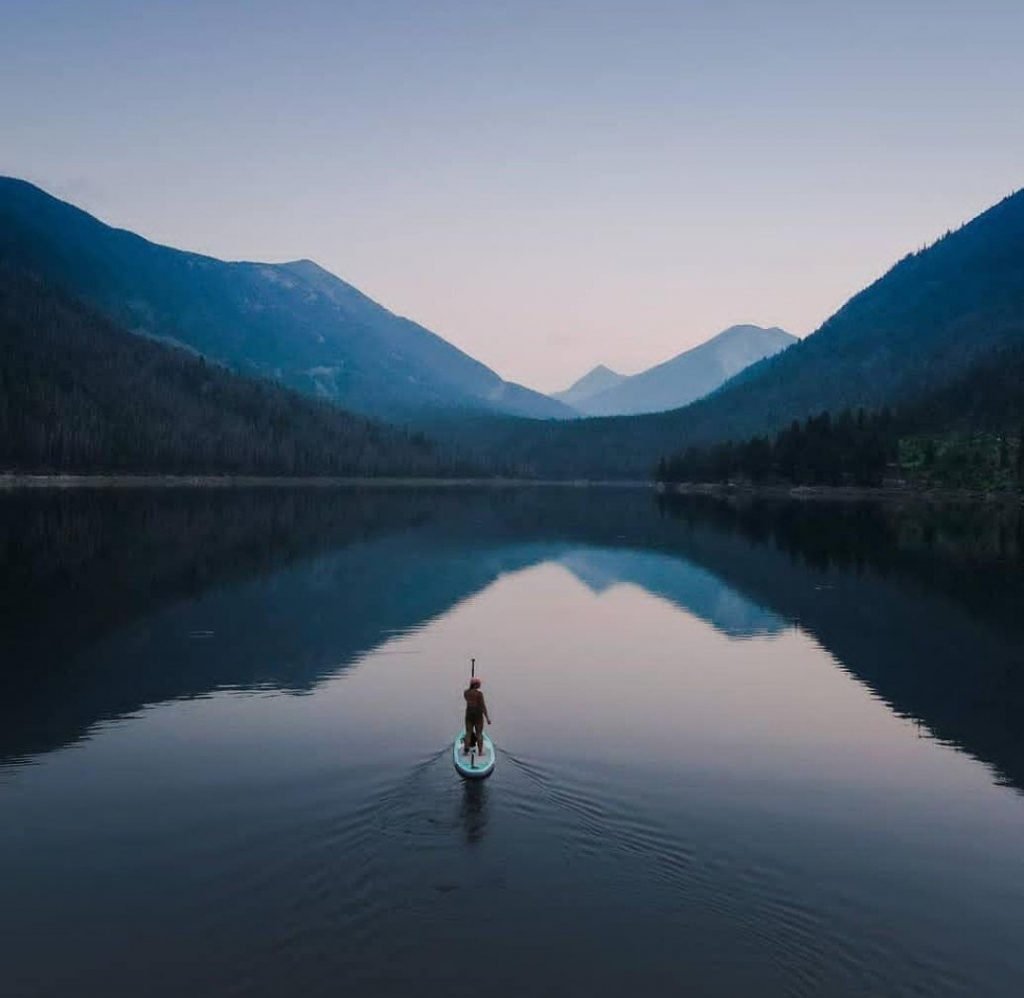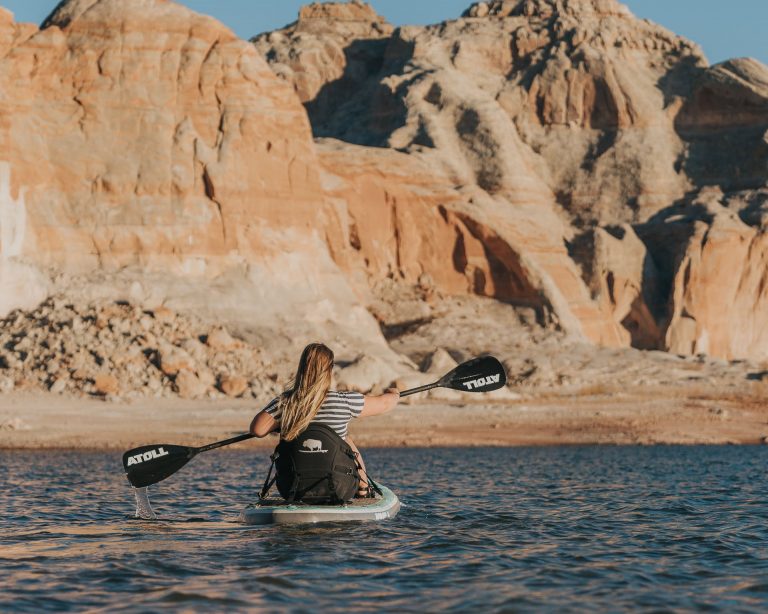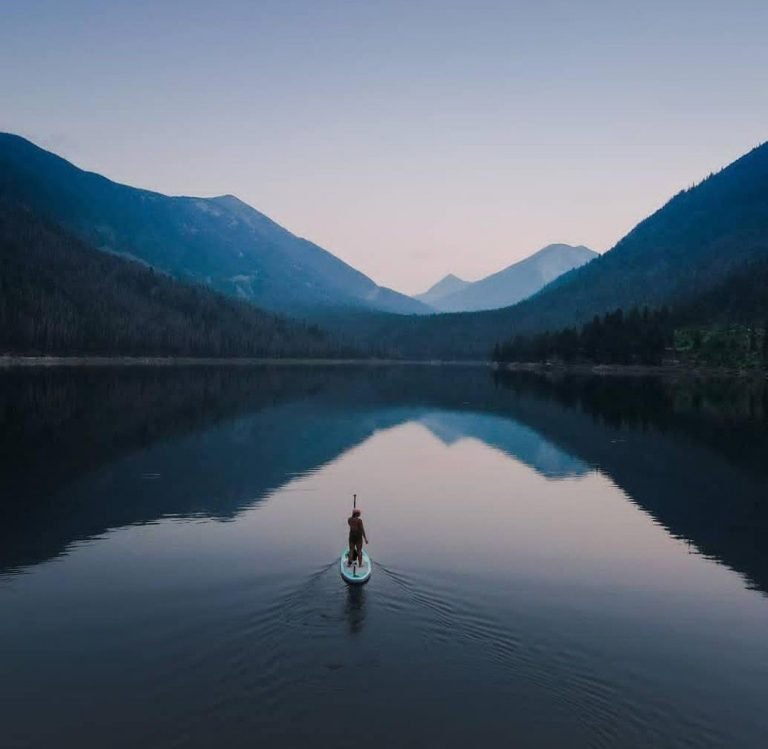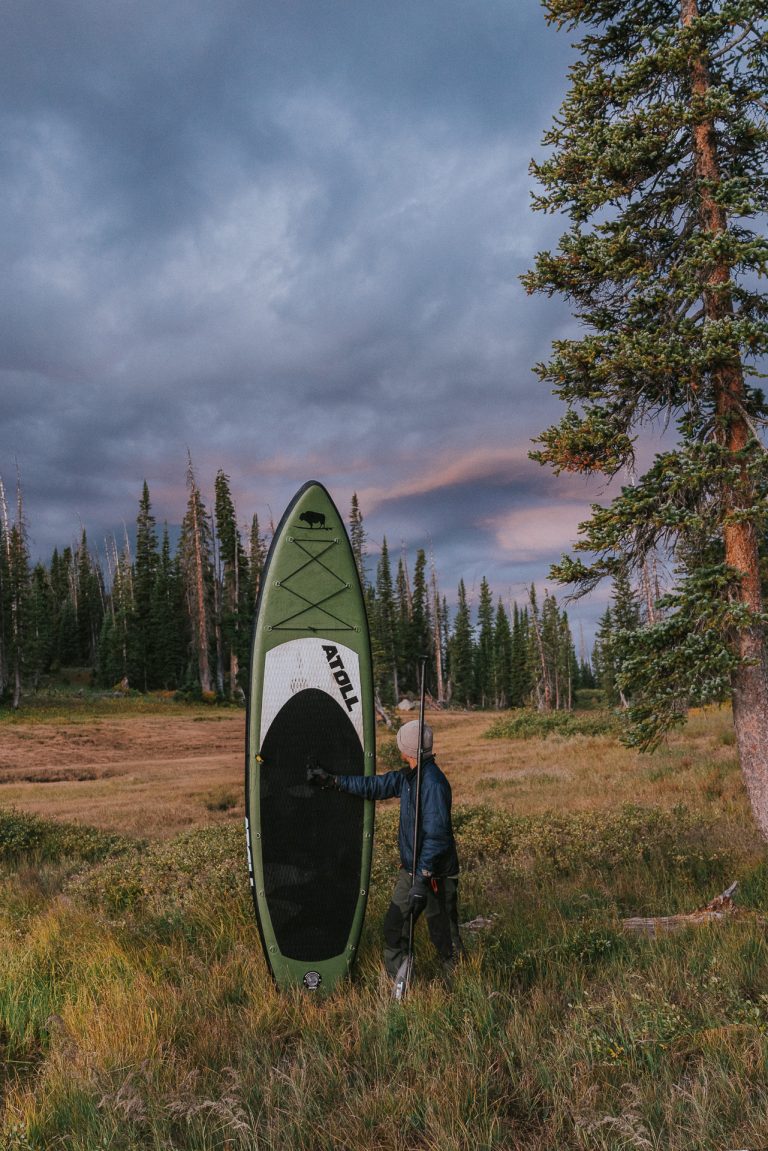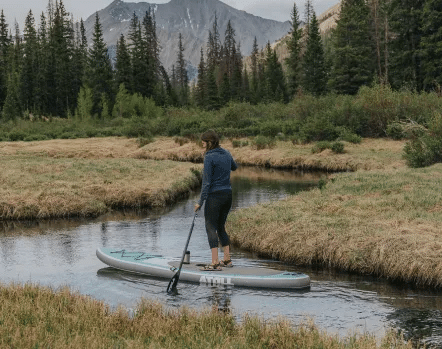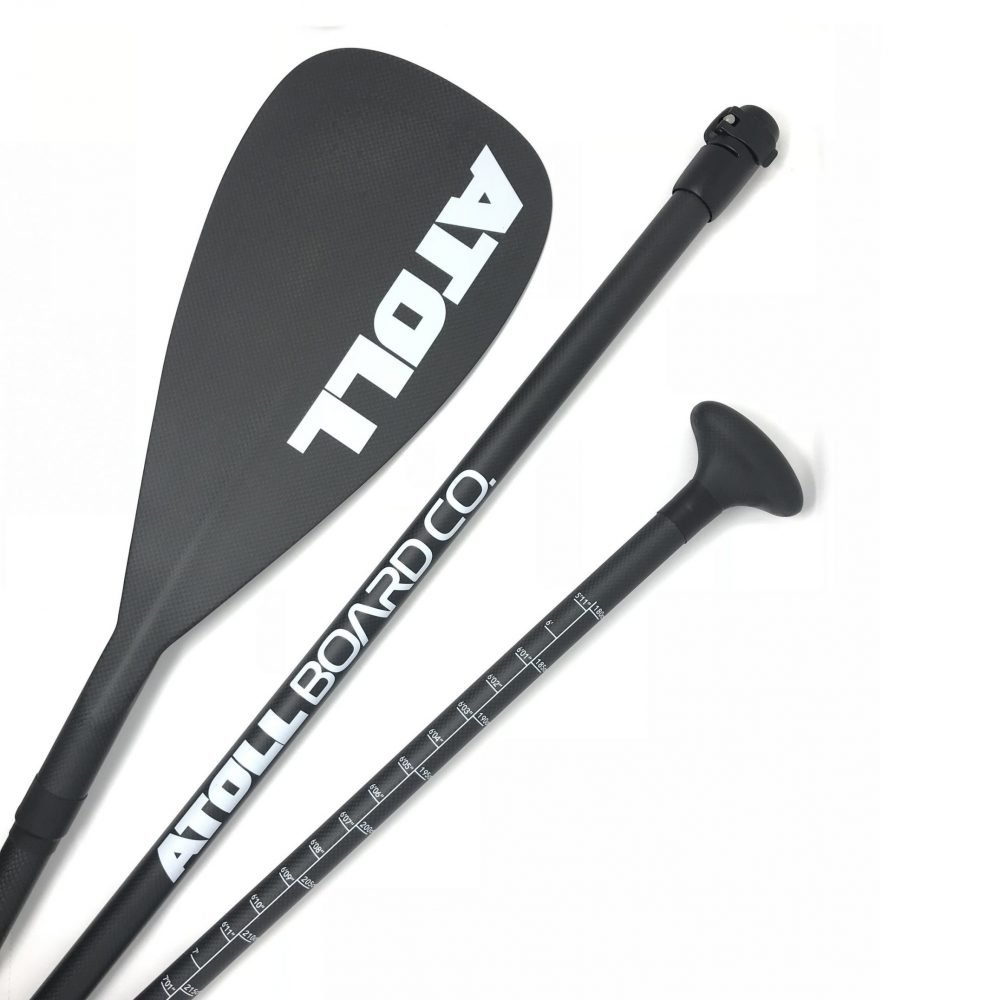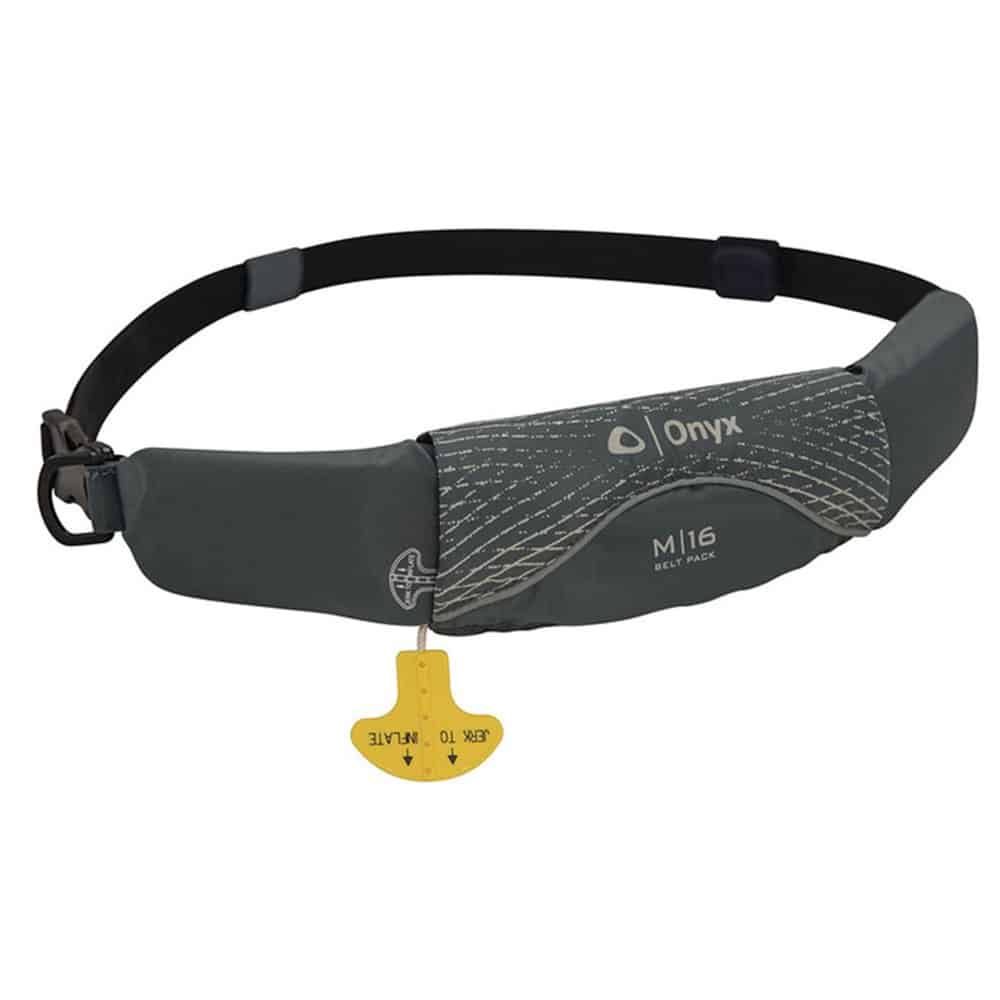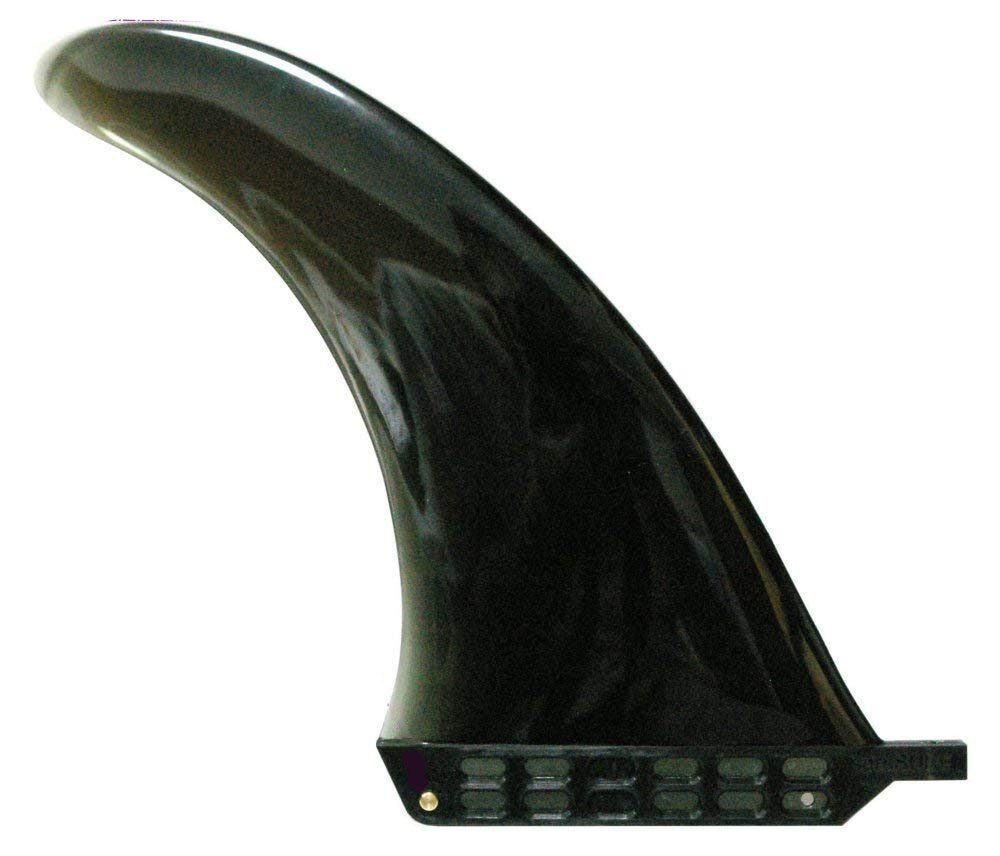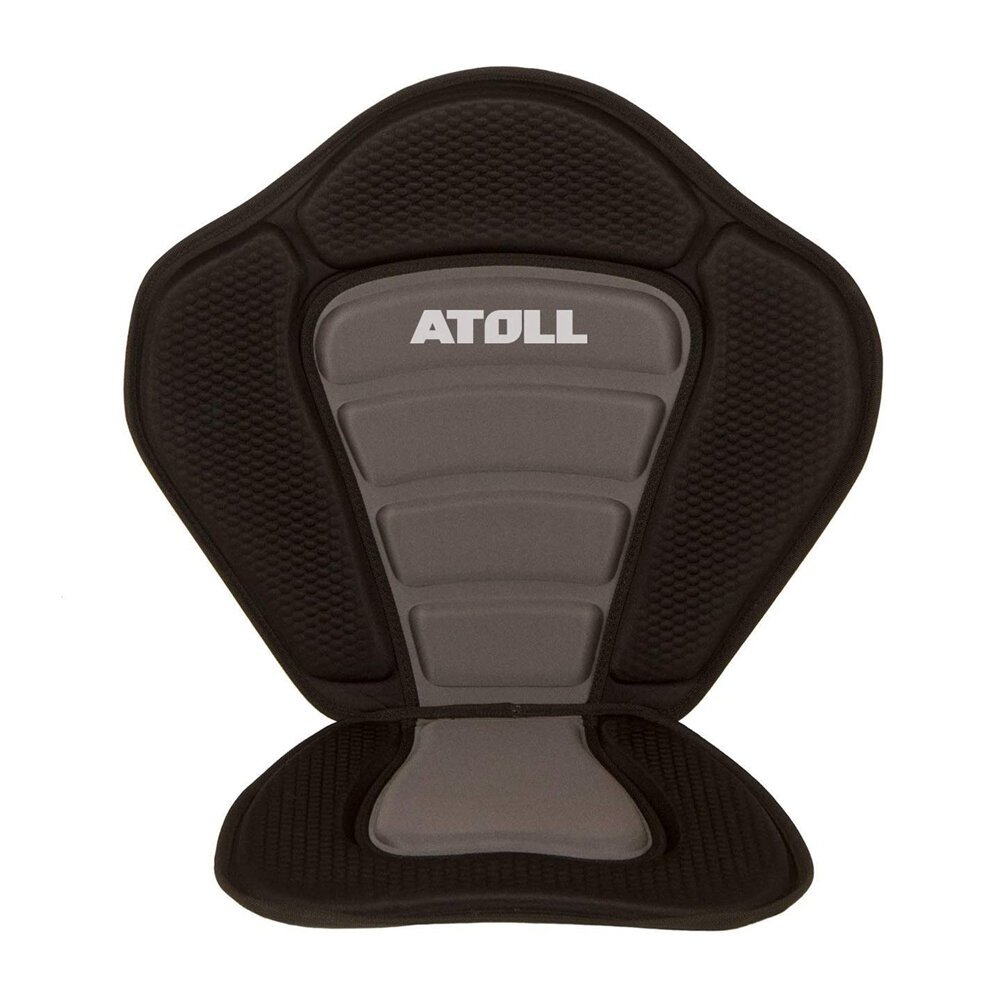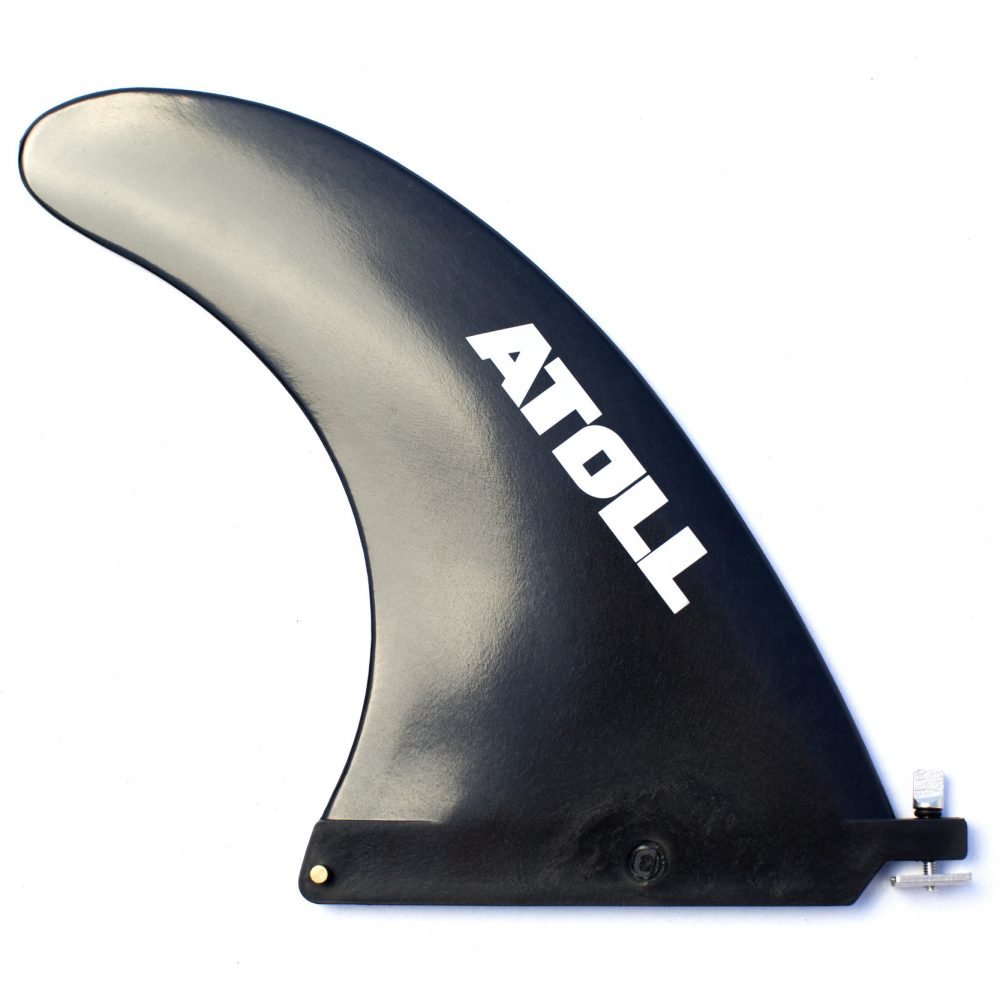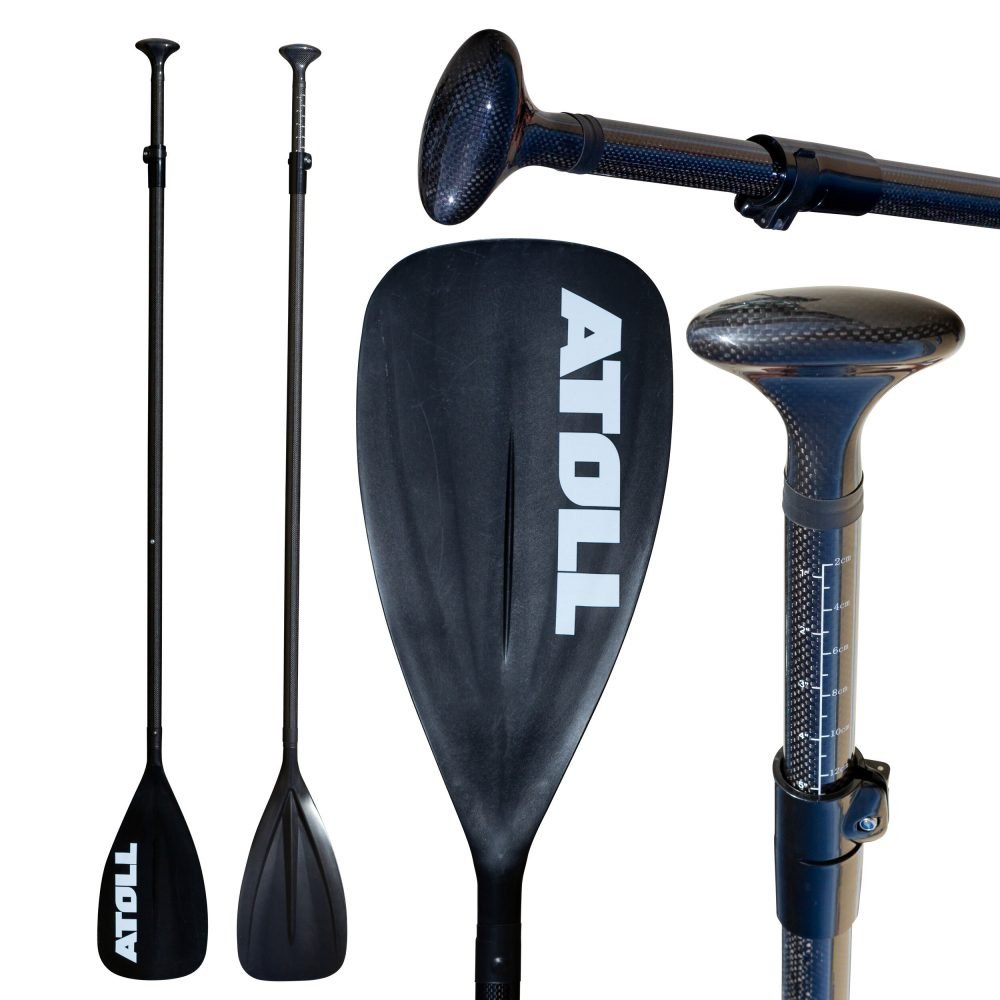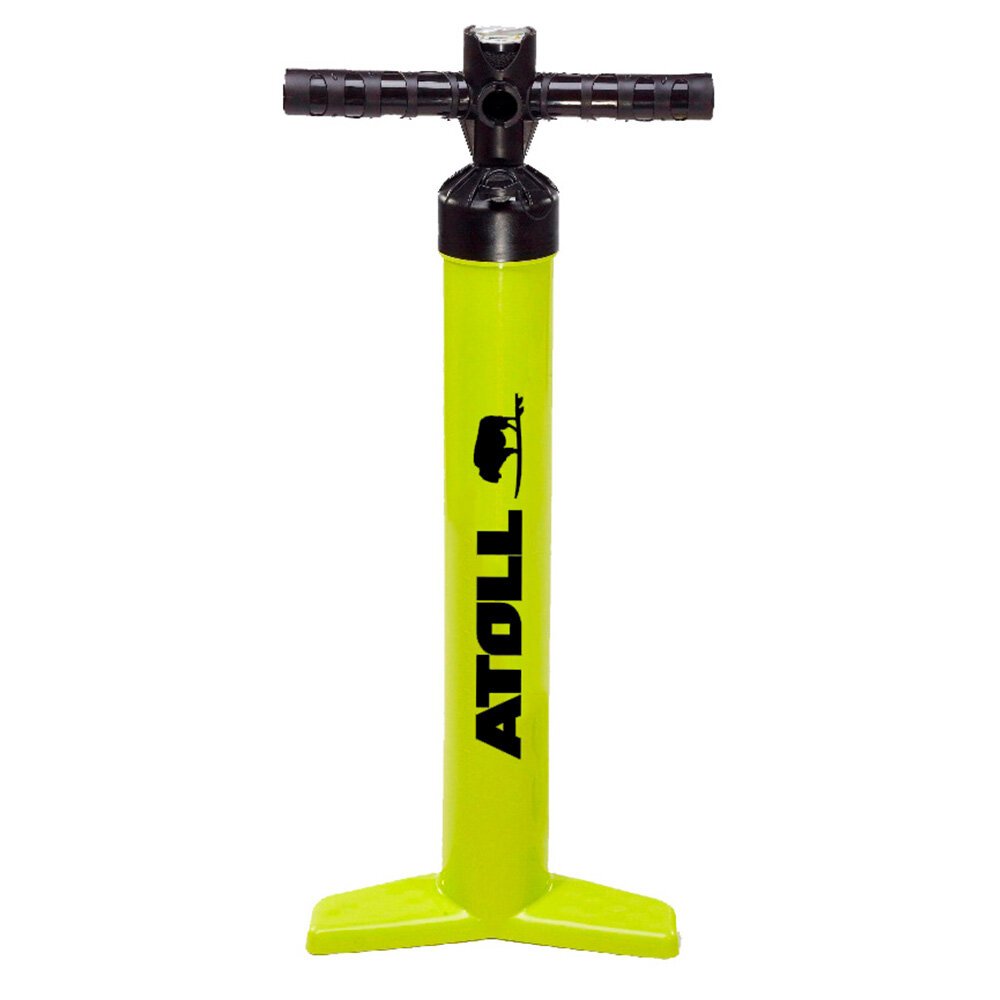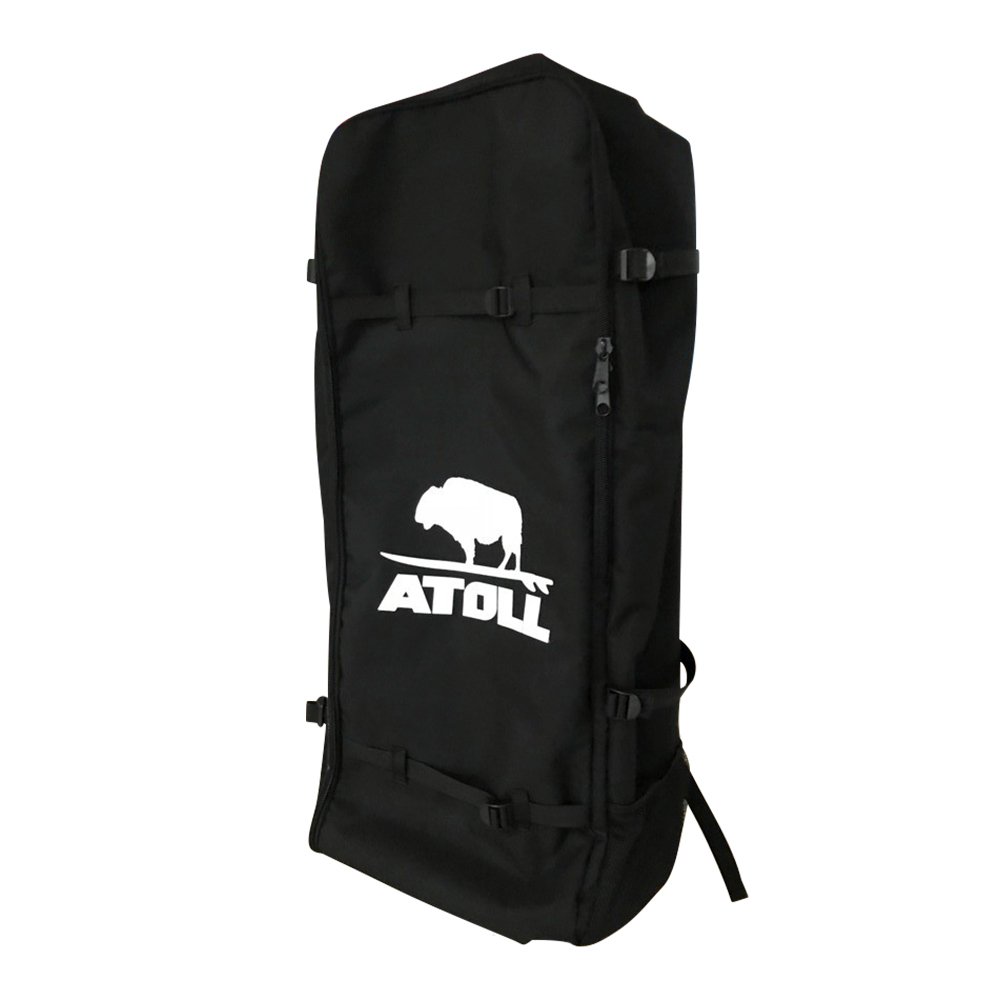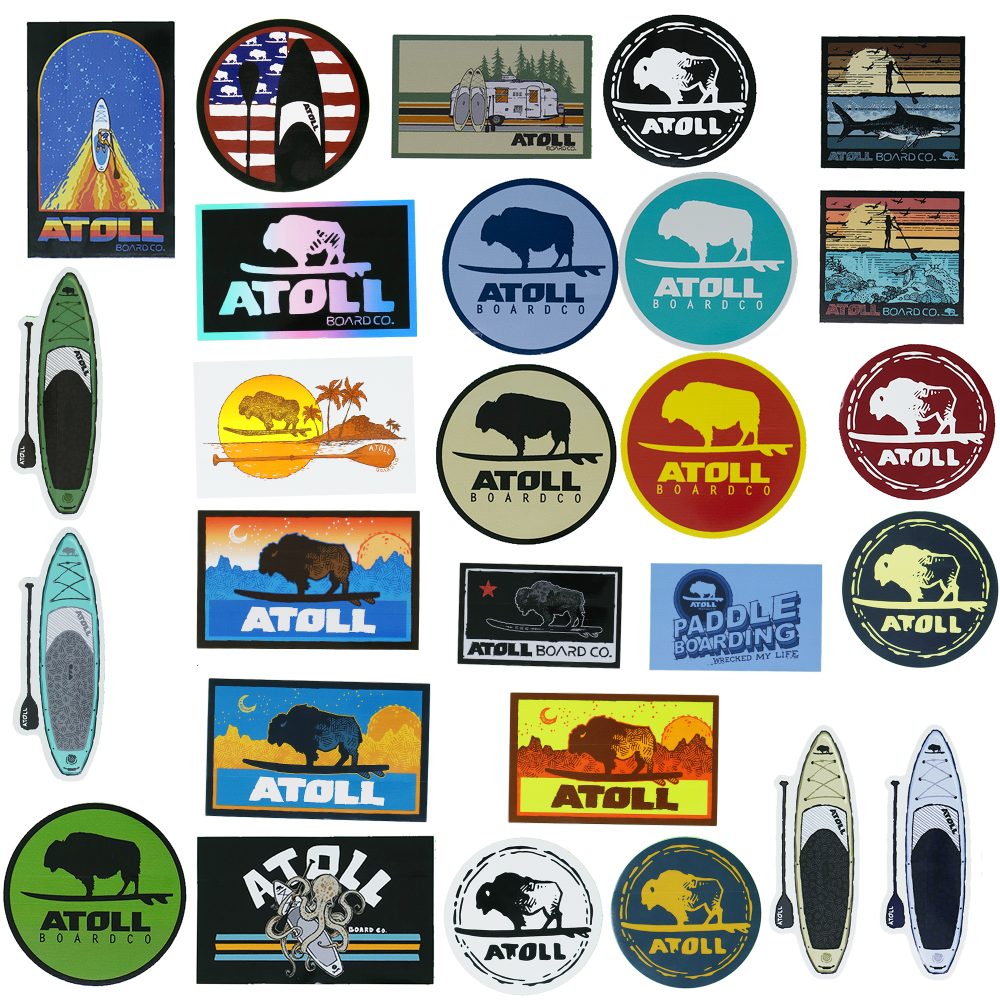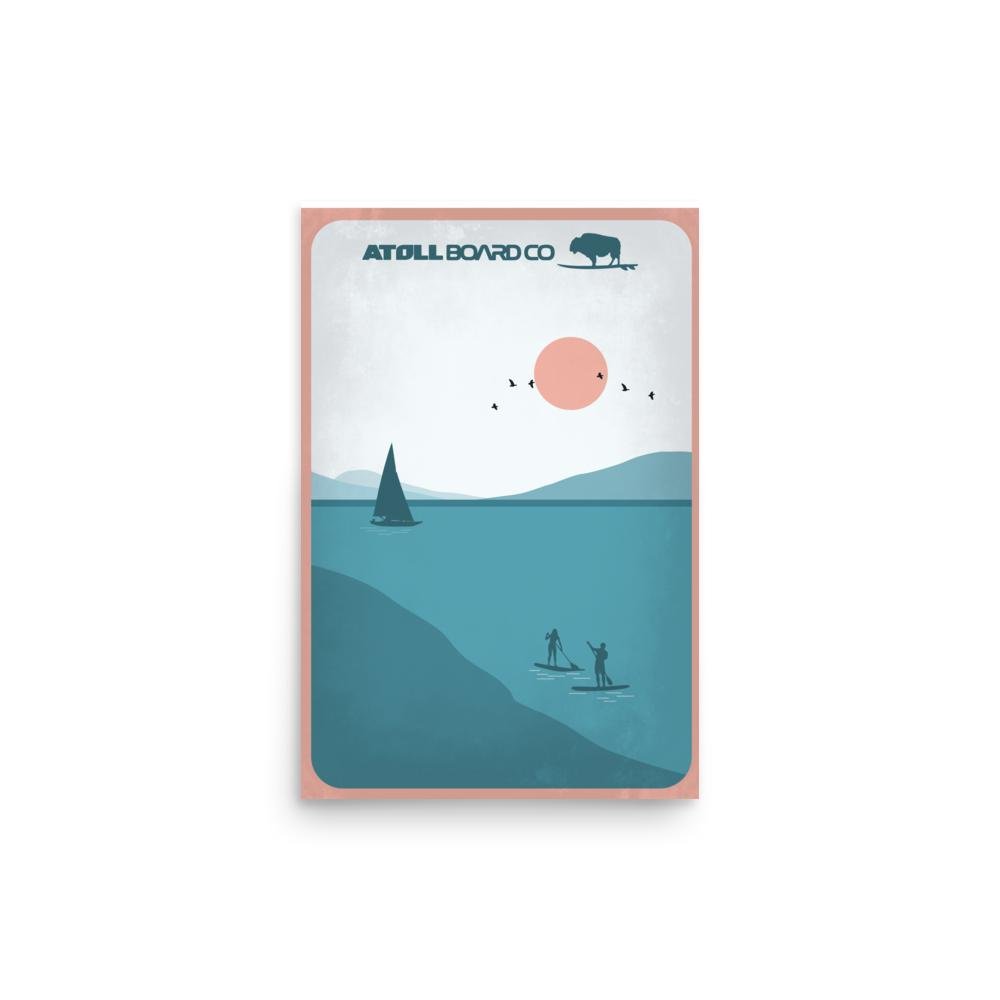Do you want to extend your warm SUP season into cold water paddling? Then you need to know how to stay safe while having fun! Check out these top 6 cold water paddling tips from Atoll boards!
——————
Cold water paddling offers a fun way to exercise and explore during the winter months. It also poses different challenges that first must be understood before you decide to step on your SUP.
If you are a beginner, it is always a good idea to listen to the advice of those who have been doing it for a while.
A group of such experienced paddlers happens to be the Atoll team. These are our top six tips for cold water paddling.
Use these tips to prepare you for the elements while at the same time keeping you safe and having fun.
With that said, let’s begin at number one…
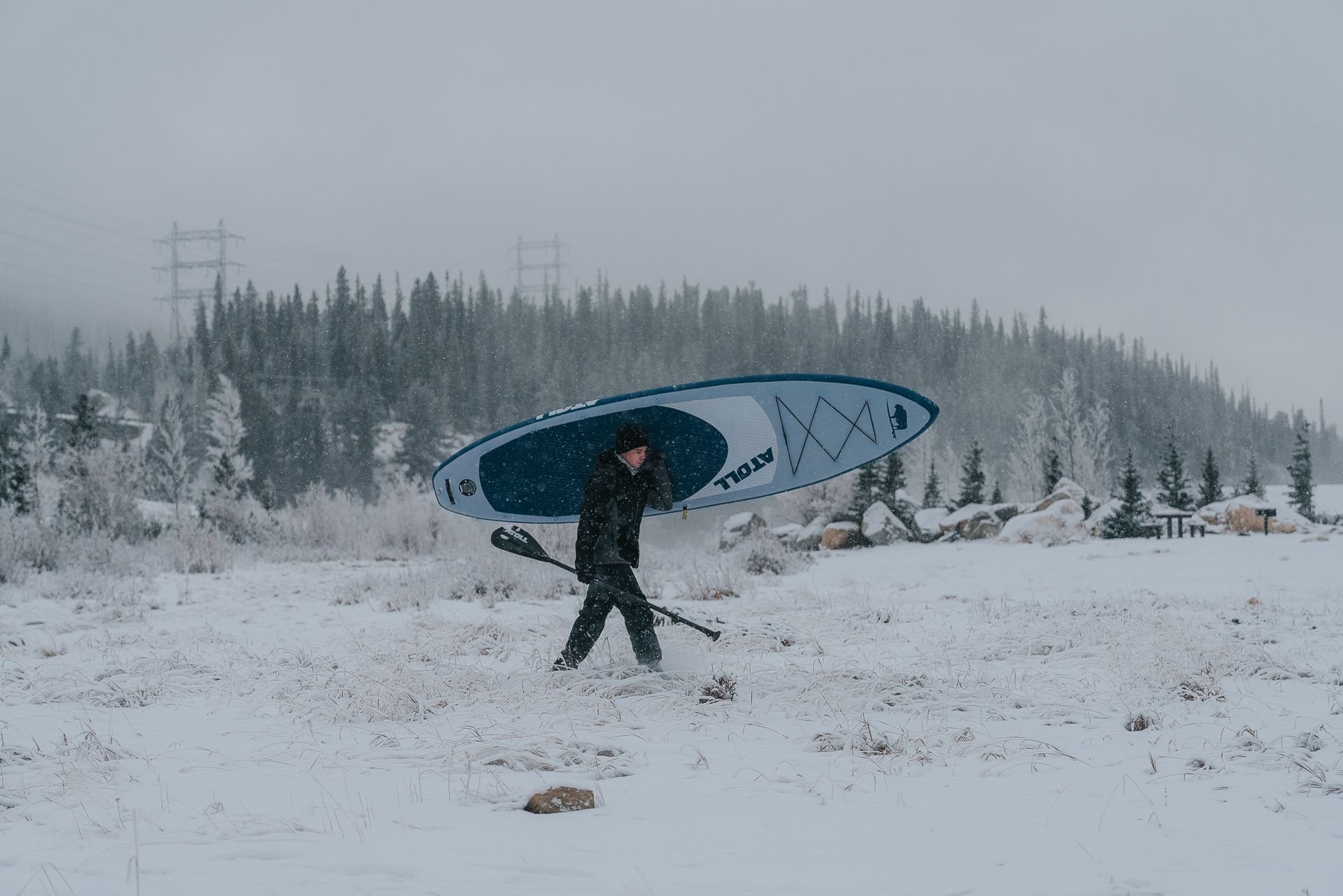
1. Start With the Basics
When you first start paddle boarding there are a few things you must always do whether you are paddling in cold water or warm.
These include wearing a PFD, wearing a leash, making sure the size and shape of your board fit your body type and knowing the proper launch locations on the body of water you plan on paddling.
These remain on the top of your to-do list when you paddle during the cold months.
Always make sure you are wearing a PFD that works. If it’s a belt pack, make sure the c02 cartridge is in working order and the inflatable device floats your weight.
If it’s a vest PFD, make sure it’s comfortable for paddling long distances and doesn’t hinder your stroke.
In addition, you should be comfortable on the board you’re paddling. If possible, use a board you are familiar with, one that you know will float your height and weight.
And always be familiar with the area you are paddling. Cold water is not forgiving like warm water. If you get lost, find yourself in unfamiliar territory, then your danger is substantially increased.
Be sure to check these off your list before you head out.
2. Wear the Proper Clothing
When it comes to cold water paddling you have two basic choices…
A wetsuit. Or a dry suit.
Of course, there are other variations you can use to stay warm while on the water. But always start here.
If you plan on being submerged in the water a wetsuit is the way to go. The neoprene fabric will keep you warm by allowing a thin layer of water inside that your body will heat.
If you want to remain dry and upright then a dry suit is the better choice.
To get a complete understanding of what you can and should wear on the water you can always refer to our previous article entitled, “How to Dress for Cold Water Paddling (Even if You Don’t Have a Full Wetsuit).”
3. Bring the Right Gear for After Your Paddle
When it’s cold, it’s not enough to just wear the correct clothing on the water.
Especially if you spend any time in the water instead of on top of it.
To keep yourself warm and protected once you get off of your board, it’s always a great idea to carry a few extra pieces of gear with you.
These include a headlamp, a hot bottle of water, wool socks, and a changing poncho.
Why these?
Well, the headlamp can come in handy if you stay on the water longer than you planned. As the weather gets colder, the sun sets sooner. In order to keep your visibility up to pack your gear and board, a headlamp comes in handy. Use it to light up your board while you put it back into its carrying backpack and make sure you don’t leave anything behind.
A hot bottle of water is a great way to warm yourself up before changing. Ater you get off the water, pour it over your head and let it warm up your body before changing. A hot bottle can stay warm up to 2 hours in your car.
Warning – only use this tactic if you are in a full wetsuit. Otherwise, you might be defeating the purpose!
Wool socks are always handy to warm up your feet once you’re in your car. Wetsuit booties, while helpful, are not always the warmest option especially if you are not constantly submerged in the water. This can clearly be felt once you’re back on land and you don’t have much feeling in your toes! Pop a high-quality pair of wool socks on and you’ll instantly feel better!
Last, changing ponchos are thick microfiber materials that you can drape over your entire body while you change out of your cold water gear. These provide you with the privacy you need and the warmth you desire. Perfect for those cloudy cold days when you want to change fast!
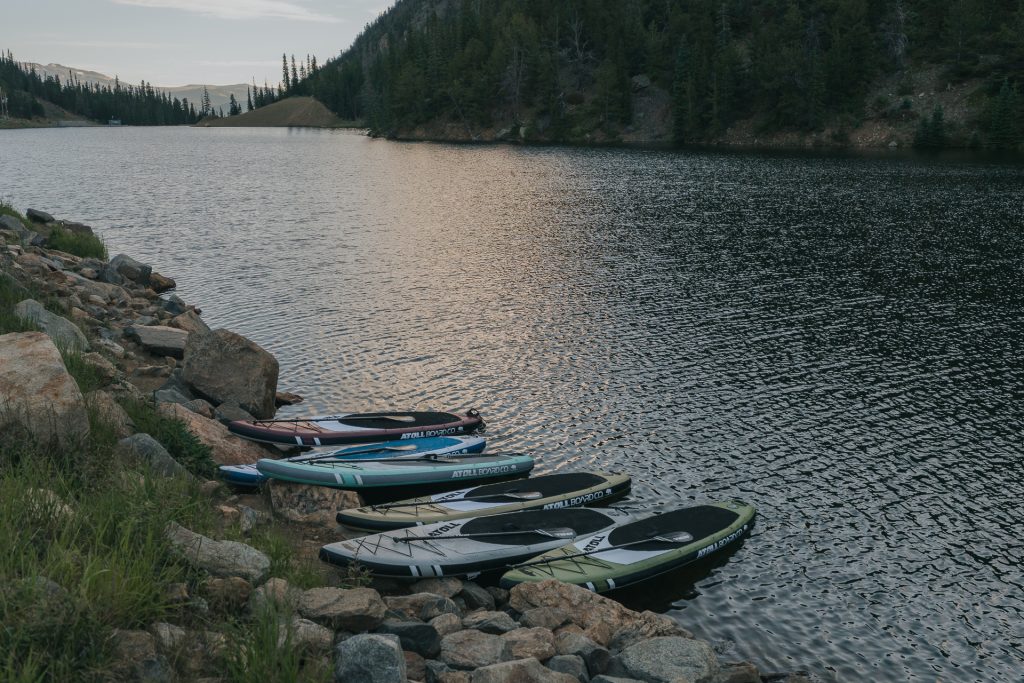
4. Have a Backup Plan
As we’ve already hinted at, paddling in cold water increases the danger of the sport. During the warm months, there is no hesitation when it comes to jumping in the water, having fun, and splashing around. It’s easy to climb back on your board and keep paddling in the warm sun.
But when the temperature drops the risks of paddling rise. Life-threatening dangers like hypothermia are a stark reality.
In order to avoid any risk, always have a backup plan in place before you head to the water.
This can include letting a close friend or family member know you’re heading out. It can also mean taking someone with you who can watch from the shore.
Another way to have a good backup plan is to take a cell phone with you in a dry bag (like the ones produced by Gecko Brands). By having one, you can always call for help if you happen to fall in and need assistance.
It’s always a great idea to have a contingency plan in place for a worst-case scenario.
And in case you have any doubts before you go, it’s always a great idea to pass and wait for another day.
5. Know the Wind and the Weather
We’ve mentioned this tip before, but it is always worth repeating.
Before you head out, we advise you to take into account the weather first. Know if there is a storm coming in. If it might rain. If the temperature is going to drop. And what the water temperature is on site.
In addition, take into account the wind speed and direction. If it is blowing over 15+mph we advise you to wait for another day. If not, be sure to know the direction of the wind.
You always want to paddle directly into the wind on the way out, and with the wind on the way back. Doing so will conserve your energy and ensure that you make it safely back to shore.
To find out the best apps for weather and wind that you can download for FREE today, check out our previous article, “Top 6 Paddling Apps You Need.”
6. Paddle Somewhere Familiar or With Someone Who Is Familiar With Your Paddling Location
When you paddle solo and somewhere unfamiliar you increase your risk. But when you paddle solo somewhere unfamiliar and in cold water, you’re asking for trouble.
By taking someone along with you who is an experienced paddler and who is familiar with the location you are paddling, you decrease your risk and increase your fun.
Having an extra set of eyes to look out for your safety and an extra set of arms to help you if the situation should arise will allow you to calmly paddle in the cold without any worries.
We highly recommend always going with a buddy who knows how to paddle to ensure you both remain safe while having fun.
Conclusion
While cold water paddling may increase your risk, we believe it is worth the extra effort. You get to remain active during the cold months doing what you love, you get to explore your surroundings, and you get to see your paddling location in a completely new way. Just make sure to follow these tips so that you and your friends remain safe on the water. Of course, like always, if you have any questions, please feel free to ask! Our inbox is always open. Until next time, Atoll family, remember to adventure on.


